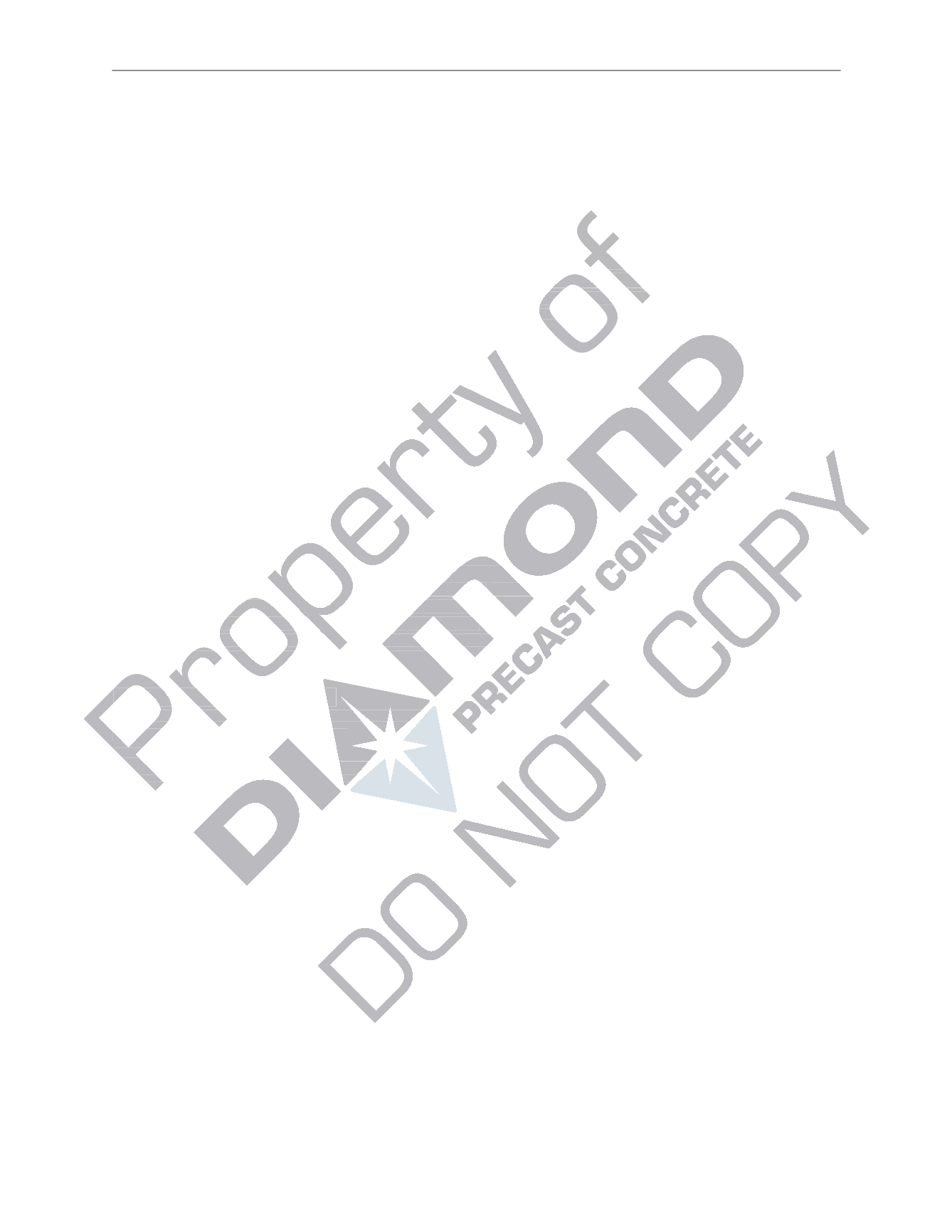

A23.4-09
©
Canadian Standards Association
November 2009
20.3 Control of slump and air content
The time from start of mixing to placement shall not exceed 1 h. Retempering of concrete shall not be
allowed.
Where truck mixers are used, air and slump tests shall be performed on every load and the mixer shall
be adjusted as necessary until it complies with the uniformity requirements of Clause 5.2.3.5 of
CSA A23.1, at which time the frequency of the tests may be reduced to once a day for each truck.
20.4 Colouring materials
Colouring materials shall be carefully measured to facilitate the colour uniformity of the finished product.
Provisions shall also be made to ensure uniform dispersal of the material throughout the concrete.
Note:
When only small additions of powdered colouring materials are to be made, greater accuracy can be achieved by first
dispersing the colouring material in a larger amount of an inert filler or cement.
20.5 Facing materials
When facings of any suitable material (e.g., brick, cut stone slabs, ceramic and glass products, plastics,
oversized aggregates, metal sheets or sections, or wood) are used as an integral part of the precast
concrete element, they shall have an acceptable performance record or be tested to the satisfaction of the
owner.
The design and dimensions of elements shall take into account any difference in shrinkage or thermal
characteristics between the concrete and the facing material.
Notes:
(1)
When special facing materials are used, design and testing should be based on the expected environmental conditions.
The test samples, preferably to full scale, should be produced, cured, and handled in a manner similar to the expected
production procedures.
(2)
Particular attention should be paid to the interaction of the concrete and the facing materials during humidity and
temperature changes and to potentially detrimental reactions between the concrete and the facing material. If the
materials do not have similar physical properties, the final design should include provisions for possible movement of
the face material in relation to the backup concrete panel.
(3)
If performance records for special climatic conditions (including severe corrosive atmospheres) have not already been
established for the face materials, the materials should be tested for such conditions. The tests may be accelerated but
should otherwise reflect the expected service condition.
20.6 Multiple finishes
Elements with more than one finish shall have features incorporated into the casting to ensure proper
demarcation between the finishes.
Note:
When a precast element is exposed to view from all sides (e.g., a column), it is impossible to completely match the
colour and texture of the formed surfaces with the unformed surfaces. The difference can be made more acceptable by
placing such elements in the finished structure in a way that hides the unformed surfaces or by orienting the surfaces so that
they are viewed from one direction only. For the best possible match, a high degree of hand-finishing of the unformed
surfaces should be specified to match the smoothness of formed and unformed surfaces. See also
Clause 26.1.2
.
21 Placing of concrete
21.1 General
21.1.1
The methods of mixing, conveying, spreading, consolidating, finishing, curing, and protecting the
concrete shall be established by the plant in conjunction with the plant engineer and shall be documented
as part of the plant procedures.
Note:
Limits in height of drop can be important to prevent segregation and, in the case of mixes for architectural concrete,
to maintain uniformity of appearance.
Licensed for/Autorisé à Jed Friesen Sold by/vendu par CSA on/le June/18/2015.
~Single user license only. Storage, distribution or use on network prohibited. Permis d'utilisateur simple seulement.
Le stockage, la distribution ou l'utilisation sur le réseau est interdit.
















